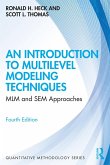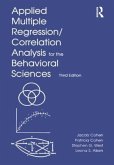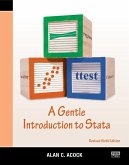This fully updated fourth edition of Research Design and Statistical Analysis provides comprehensive coverage of the design principles and statistical concepts necessary to make sense of real data. The guiding philosophy is to provide a strong conceptual foundation so that readers can generalize to new situations they encounter in their research, including new developments in data analysis.
Key features include:
Emphasis on basic concepts such as sampling distributions, design efficiency, and expected mean squares, relating the research designs and data analyses to the statistical models that underlie the analyses.Detailed instructions on performing analysis using both R and SPSS.Pedagogical exercises mapped to key topic areas to support students as they review their understanding and strive to reach their higher learning goals.
Incorporating the analyses of both experimental and observational data, and with coverage that is broad and deep enough to serve a two-semester sequence, this textbook is suitable for researchers, graduate students and advanced undergraduates in psychology, education, and other behavioral, social, and health sciences.
The book is supported by a robust set of digital resources, including data files and exercises from the book in an Excel format for easy import into R or SPSS; R scripts for running example analysis and generating figures; and a solutions manual.
For student resources, view the Support Material tab
Key features include:
Emphasis on basic concepts such as sampling distributions, design efficiency, and expected mean squares, relating the research designs and data analyses to the statistical models that underlie the analyses.Detailed instructions on performing analysis using both R and SPSS.Pedagogical exercises mapped to key topic areas to support students as they review their understanding and strive to reach their higher learning goals.
Incorporating the analyses of both experimental and observational data, and with coverage that is broad and deep enough to serve a two-semester sequence, this textbook is suitable for researchers, graduate students and advanced undergraduates in psychology, education, and other behavioral, social, and health sciences.
The book is supported by a robust set of digital resources, including data files and exercises from the book in an Excel format for easy import into R or SPSS; R scripts for running example analysis and generating figures; and a solutions manual.
For student resources, view the Support Material tab









